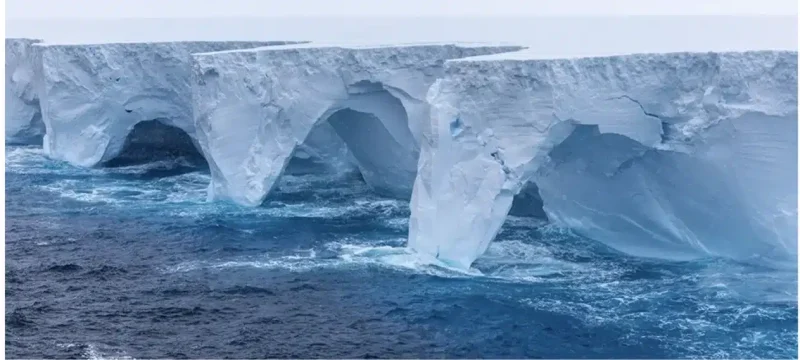The world’s largest iceberg, A23a, is undergoing significant changes as erosion exposes stunning features such as caves and arches. Discovered by the Eyos expeditions team, the iceberg has been drifting from the Antarctic coast since 1986 and is now slowly decaying due to warmer air and water. The images captured by the team reveal dramatic landscapes, with caves and arches etched into the iceberg’s surface. A drone flight showcased the iceberg’s 30-meter-high cliffs, enveloped in mist, creating a unique microclimate. The fate of such massive icebergs involves gradual disintegration and dissolution, contributing nutrients to ocean life.
Also Read: Cold Spell Breaks: Anticipated Rain and Snowfall Until January’s End
A23a, initially part of the Antarctic coast in 1986, has covered an area larger than Greater London for over 30 years. As it drifts toward the South Orkney Islands in the Antarctic Circumpolar Current, the iceberg’s exposure to warmer temperatures leads to surface melt and fractures, accelerating its decay. The expedition team’s discovery provides a rare opportunity for photography and scientific observation of the changing iceberg. The fate of A23a raises questions about its longevity as it moves away from the cold waters of Antarctica.
In addition to A23a, another iceberg, D28 or “Molar Berg,” offers insights into the potential future of A23a. Despite losing a third of its size since 2019, D28 has retained its shape and is currently near South Georgia in the South Atlantic. Comparing the two icebergs provides researchers with valuable data on the behavior and lifespan of large ice masses in warmer waters. The ongoing changes in these icebergs contribute to our understanding of the dynamic processes occurring in polar regions and their environmental impact.









